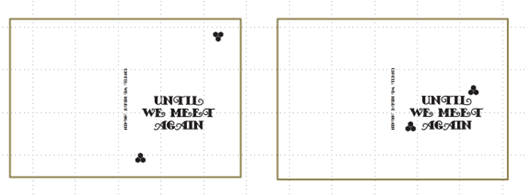Sustainability in Publishing – advice from the webinar
On 25 September, sustainability expert Simon Crump led a webinar for the PTC. This Comment picks out key advice on how to be more sustainable, with links to helpful resources.
How can you start your sustainability journey?
Some say that it costs more to be sustainable, but that is not necessarily true. As an organisation, you can do simple things, like replacing your lights with LEDs, recycling more and better, or changing your electricity to a greener supplier.
Find a champion in your organisation, who cares about the issue and can encourage others to act. You will need buy-in from senior management to make any changes work.
Materials
- Paper is not just about using recycled paper. Simon used an example of a book about sustainability, with no cover lamination, printed on paper using fibre from sugar beet. The paper is a bit rough, with flecks in it, but it suits the title. You need to research materials, talk to your printer, or ask them to talk to suppliers. Find a different paper with similar opacity and brightness, but a lower carbon footprint, for example.
- Laminate protects your book and could last 30 years, but it cannot be recycled. Laminate makers are now making thinner versions with the same strength and properties, with 20−23% less plastic in them. Try to source these.
- Vegetable inks may not be the best print quality, but this may not matter. If you are printing a mono book for general reading, then they could be fine. But if you are producing a high-quality, museum catalogue with images, for instance, then they may not work.
- Design is important when thinking about sustainability. In the images below, the one on the left wastes 70% of the foil used, the image on the right only 17%. Talk to your designers and printers about what makes a difference, where can you make changes.

- Think about trim sizes. Are they most economical for the printer's presses? Or are you wasting paper because large amounts are trimmed and thrown away?
- Can you remove or reduce blanks at the back of a book?
- If you have an index, think about reducing its font size to save pages.
- What fonts are you using? Times New Roman takes up a lot of space on a page, whereas Bembo and Garamond are smaller fonts, with a smaller ‘x’ height, using less of the page.
Sustainable printing practices
A distributed print model uses printers around the world. For instance, a printer in the UK prints books for the UK market, whilst a US printer does another quantity for the US market. There are no shipping costs, and the books are in the warehouse at the same time. For copies in other regions, you could use print-on-demand (POD).
With ‘zero-inventory’ or ‘short-run’ models, once a book’s stock in the warehouse falls below a certain number, the warehouse automatically sends an order to the printer for a reprint to be delivered into the warehouse.
POD is a delivery strategy. Its print unit cost might be higher, but the book is only printed when somebody orders it. Printing might cost more, but there is no charge for storage or handling.
Physical books versus ebooks
No one can say whether print or ebooks have a lower carbon footprint. Ebooks sit on servers, with their associated carbon-dioxide equivalent (CO2e), which is hard to calculate. Each time you download an ebook, its carbon footprint increases. If you read a book on a tablet or phone, then its carbon footprint is shared with other activities on that device. But if it is on an e-reader, then the carbon used in making the device goes against ebooks.
AI and sustainability
AI can be a great help, but it is greedy in terms of energy use. One ChatGPT query uses 0.34 watts of energy. With 1 billion queries per day, this equals 340,000 kilowatts, or 124 gigawatts annually. 124 gigawatts per hour is equivalent to powering London for 10 days.
Adding in support to run ChatGPT – a factor of 10 – makes 1,240 gigawatts annually.
European Union Deforestation Regulation (EUDR)
EUDR is about traceability, to ensure that the trees that made a book’s paper are not causing deforestation or land degradation. Book Industry Communication (BIC)’s fast-track project aims to provide practical solutions to delivering EUDR across the book industry. You can see the results here.
Although there is a move to delay its implementation from December 2025, publishers need to think about the changes they need to make to systems and processes to be able to implement and run EUDR.



Simon Crump
Simon Crump is a Publishing Consultant and sustainability expert.
He is Environmental Consultant at Book Industry Communication (BIC) Ltd, where he sits on the Green Supply Chain Committee; General Manager at the British Printing Industries Federation (BPIF); and a Senior Associate at Maverick Publishing Specialists.